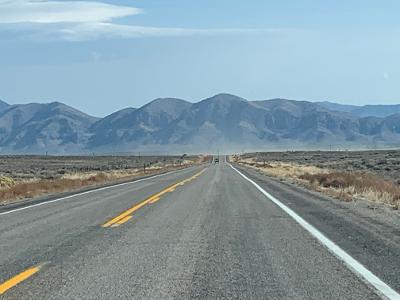So why visit a small city like Lens? It is not a well-known city and not yet on the tourist list of “must see” places.
Lens was dealt a harsh blow during World War I as it was ravaged, and, then it was dealt another blow with the end of the mining industry in the late 1980s. The only remnants of the mining industry can be seen in the spoils dotting the countryside, which are pyramid-shaped massive piles of shale and sandstone that were removed from the coal mines through 1980.

As previously mentioned, the Hotel Louvre-Lens was created out of the structure of authentic row-houses that were once miners’ homes. There is a reason for the name of the hotel as the Louvre (yes, the Paris Louvre) opened as outpost on the site of an old Lens coal pit, mining pit No. 9, specifically.
The museum has 300,000 square feet and is 1,200 feet long. The works are exhibited in chronological order from antique times through the Middle Ages to our modern era. It is impressive! The museum is right across the street from the hotel, obviously very convenient.

Then, a restaurant, L’Atelier de Marc Meurin, was opened on the grounds facing the museum. The restaurant building is round with all-glass walls. We enjoyed a very nice dinner with a view of the museum and grounds.
So, now we have a very nice hotel, the Louvre and a very good restaurant in Lens. But there is more as the area was the site of much World War I history. We visited both the famous cemetery Notre-Dame de Lorette (the Albain St. Nazaire French Military Cemetery) and the Ring of Remembrance. The 62-acre cemetery covered with white crosses is the largest military cemetery in Europe.

The Ring of Remembrance was unveiled on November 11, 2014, to commemorate the 100th anniversary of the first world war. There are 600,000 names in alphabetical order from 40 different nationalities engraved in the ring. The ring is 10 feet high and 1,132 feet round.

And, to end our visit to Lens, it ended on a high note with an aerial display, which I assumed to be by the French equivalent of our Blue Angels. The blue, white and red was impressive.


Bravo! Great reporting on this very historically important site.
Thank you. Donna
Wow-what a lot of history and sadness in one city! Very interesting, Donna!
Wow!!! Sounds like a fabulous trip can’t wait to hear more!!!
Thanks Donna,
I hope you & Steve get to enjoy the fall seasonal gibier dinners as you travel around France. Just mind the “bird shot” that is sometimes found in your pheasant or quail to certify it as fresh game.
Smiles,
pag
I’m loving your blog even more than I usually do! The pictures have been a great addition!
Thank you! I will do my best to continue adding places to your “want to see” list, which is easy in Europe! Donna